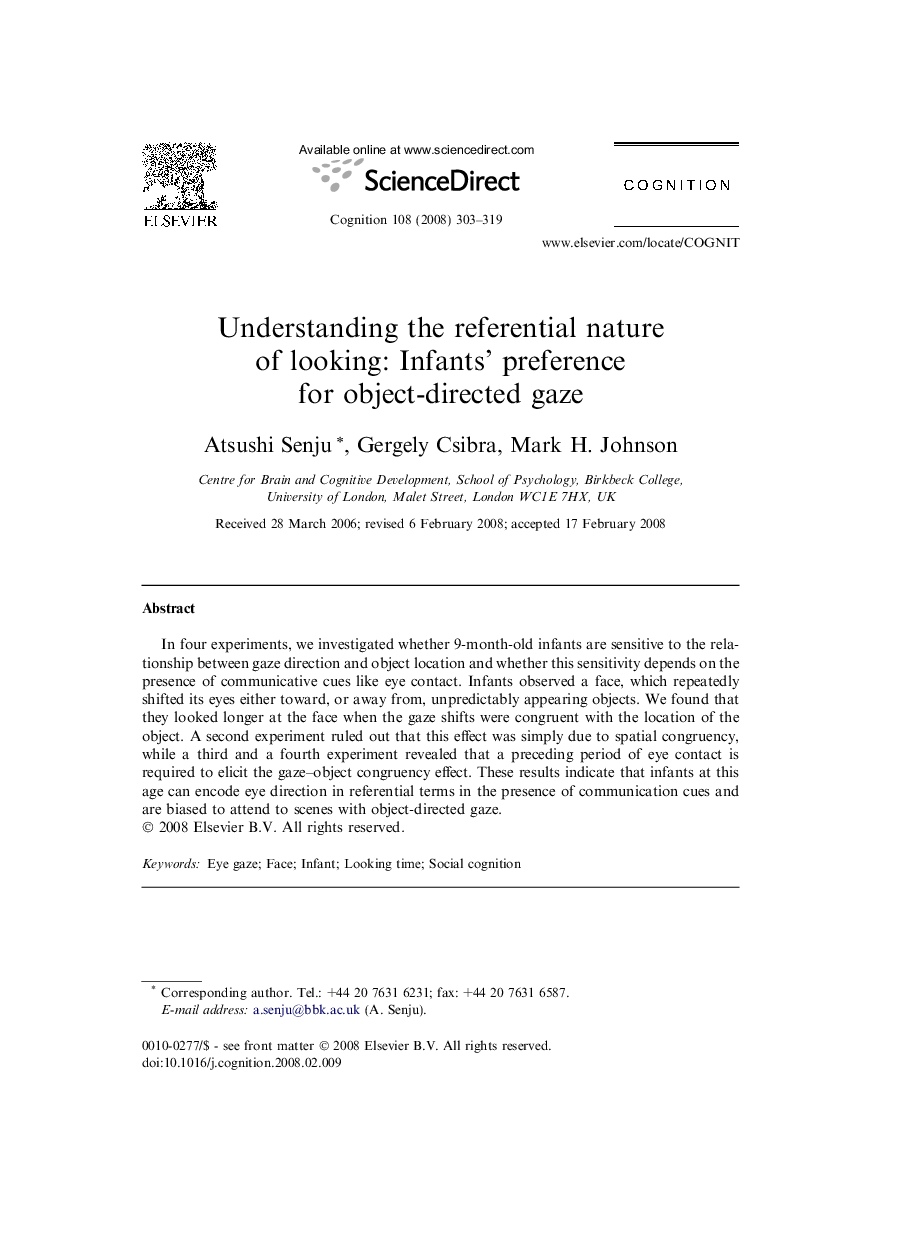| Article ID | Journal | Published Year | Pages | File Type |
|---|---|---|---|---|
| 927079 | Cognition | 2008 | 17 Pages |
In four experiments, we investigated whether 9-month-old infants are sensitive to the relationship between gaze direction and object location and whether this sensitivity depends on the presence of communicative cues like eye contact. Infants observed a face, which repeatedly shifted its eyes either toward, or away from, unpredictably appearing objects. We found that they looked longer at the face when the gaze shifts were congruent with the location of the object. A second experiment ruled out that this effect was simply due to spatial congruency, while a third and a fourth experiment revealed that a preceding period of eye contact is required to elicit the gaze–object congruency effect. These results indicate that infants at this age can encode eye direction in referential terms in the presence of communication cues and are biased to attend to scenes with object-directed gaze.
